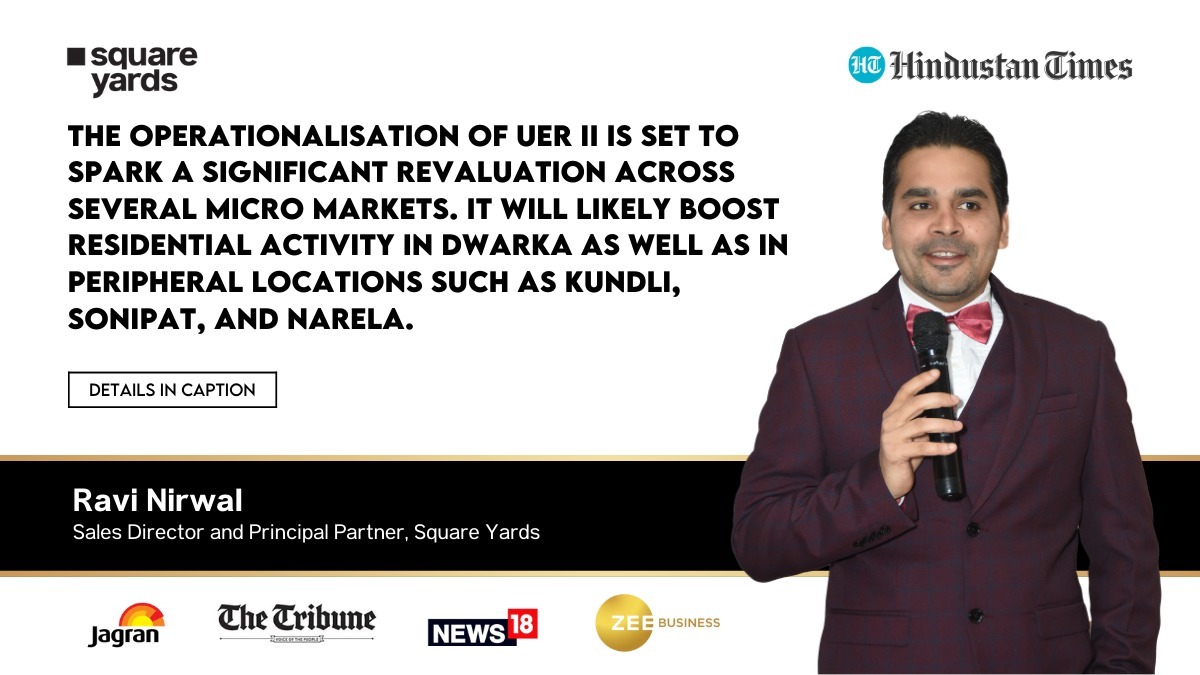Prime Minister Narendra Modi inaugurated two major highway projects in the Delhi-NCR region on Sunday: the 76-km Urban Extension Road-II (UER-II) and the 29-km Dwarka Expressway. Officials said the projects are aimed at cutting traffic in Delhi and giving quicker road access to nearby cities.
UER-II, built at a cost of about ₹8,000 crore, runs from Alipur to Mahipalpur. It passes through Mundka, Bakkarwala, Najafgarh and Dwarka. The corridor has four to six lanes. It connects with NH-44, NH-9, and NH-48, and further links to the Delhi-Mumbai Expressway. This provides faster road access to cities, including Sonipat, Panipat, Karnal, Rohtak, Ambala, and Bahadurgarh.
The Dwarka Expressway is 29 km long. It runs between Delhi and Gurugram. Officials said it will take pressure off the Ring Roads and ease traffic at choke points, such as Dhaula Kuan and Mukarba Chowk. They added that the new roads will also cut travel time to the airport and outer NCR cities.
Analysts said the added connectivity will push demand in housing, warehousing and commercial spaces. Localities likely to benefit include Dwarka, Najafgarh, Rohini, Kundli and Sonipat.
Ravi Nirwal, Sales Director and Principal Partner, Square Yards, said, “It will open access to budget-friendly locations for both homebuyers and businesses while preserving seamless connectivity to Delhi’s primary commercial hubs.”
Industry watchers also pointed out that the corridors will support industrial and logistics growth. With spurs leading directly to highways, the network is expected to attract investment in storage, manufacturing and retail facilities.
Nirwal added, “From a property market perspective, the operationalisation of UER II is set to spark a significant revaluation across several micro markets. It is likely to boost residential activity in Dwarka, as well as in peripheral locations such as Kundli, Sonipat, and Narela. We believe the impact will go beyond simple price appreciation. The new connectivity corridor is expected to create a broader and more resilient base of demand. It will open access to budget-friendly locations for both homebuyers and businesses while preserving seamless connectivity to Delhi’s primary commercial hubs.”
Property prices along the corridor are expected to rise in the short term. Rental demand and warehousing are also likely to grow. With direct links to highways, industrial zones, and the airport, the new roads are poised to shape how the NCR region expands in the coming years.
Read more through the links below to uncover the key trends and market leaders driving this growth:
Hindustan Times: http://bit.ly/4fHdPyU
ANI NEWS INDIA: http://bit.ly/461EDFN
Jagran Josh: https://bit.ly/4lwA0Jc
Fortune India: https://bit.ly/3UvrXBF
The Tribune: https://bit.ly/3JlYasQ
News18 India: https://bit.ly/4mre6sq
Lokmat: https://bit.ly/3JjHRN0
Zee Business: http://bit.ly/4lAveKZ
Published Date: 17 Aug, 2025




